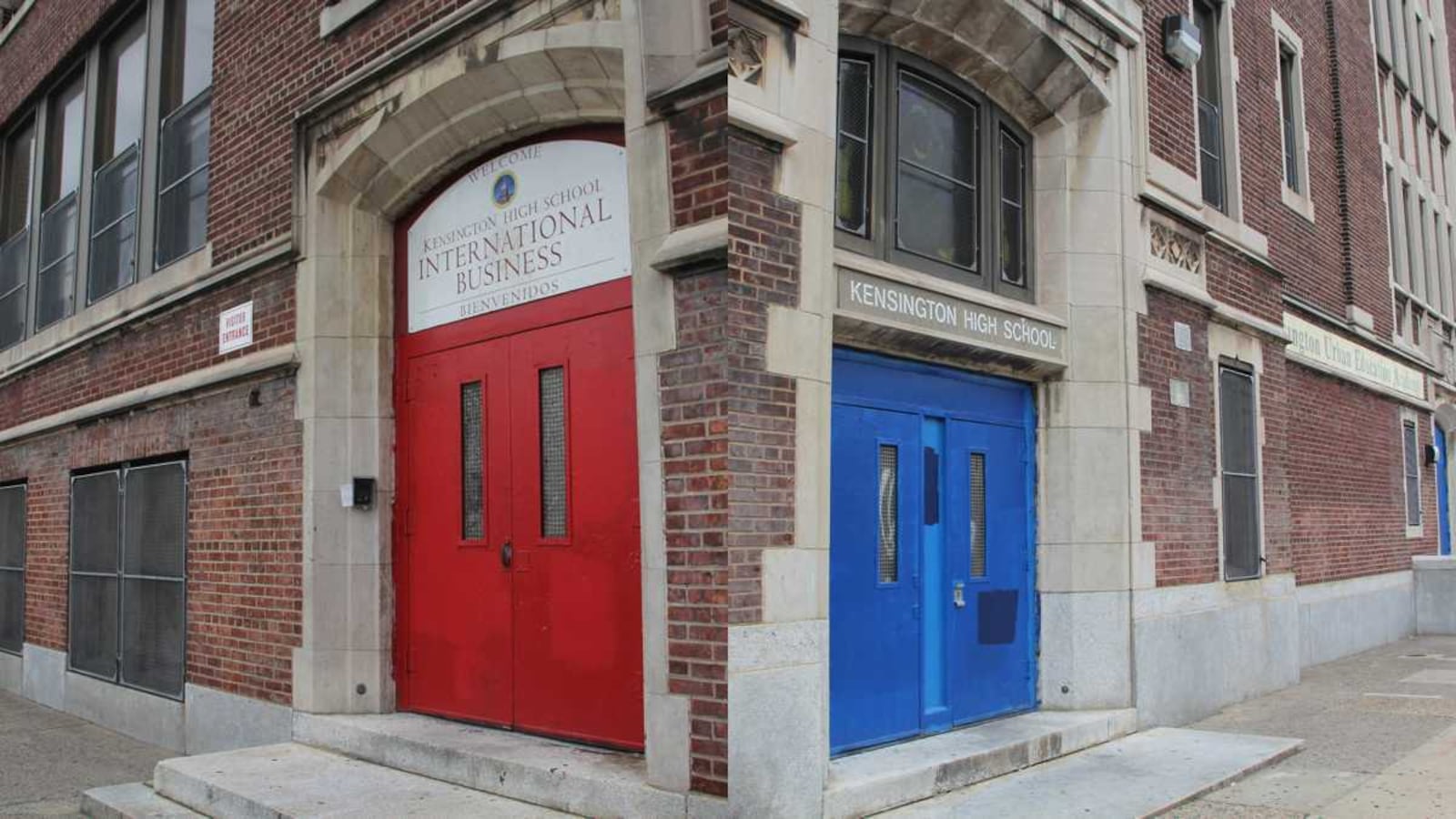This article was originally published in The Notebook. In August 2020, The Notebook became Chalkbeat Philadelphia.
In the old Kensington High School building, two distinct schools have their own budgets, principals and classes. There’s even a physical barrier, a kind of wall between the two spaces.
Essence Whiting, a rising sophomore at one of the schools, Kensington Urban Education Academy, said there are doors in the wall, but students stay on their own sides. She said she prefers Kensington Urban — which has just over 300 students — and relationships she has there over her old middle school, where the grades were three times as large.
"I know most of the teachers at my current school, and I know the principal. I know the secretaries. I know some of the lunch ladies," said Essence.
Community and activist groups lobbied for a decade to turn some of Philadelphia’s large neighborhood high schools — including Kensington High School — into smaller schools.
In 2008, activists got their wish. Kensington High became four small schools, each with a different academic focus, known collectively as the Kensington Multiplex.
In March, the School District of Philadelphia announced that it would reunite two of those schools, prompting an outcry from students and some teachers.
Still, the District stands by its "nuanced" case for merging the schools. Although support for the small schools movement bottomed out due to turnover at the superintendent level, the District still runs small schools of many different stripes — and many different levels of success.
The historical case for small schools
Neighborhood schools in big cities face many challenges, according to Rebecca Reumann-Moore, senior research associate with Research for Action, a group that followed schools during the small schools movement of the mid-2000s.
Unlike magnet or charter schools, neighborhood schools have to accept any student from a designated geographic area. That can concentrate students living in poverty, English-language learners and students with special needs in neighborhood schools, Reumann-Moore said.
As a result, these schools tend to have lower graduation rates and test scores that are "quite low, especially compared to other high schools with admission standards," she said.
Poor achievement at large neighborhood schools — such as Kensington, Olney and West Philadelphia High Schools — combined with new information about dropout rates in these schools added fuel to the fire for smaller schools under the former CEO of the Philadelphia School District, Paul Vallas.
Vallas supported the creation of 25 small schools, each with no more than 700 students. Most had fewer than 500. Some schools were newly created magnet schools with admissions standards, and others were carved out of existing neighborhood schools and accepted all students.


